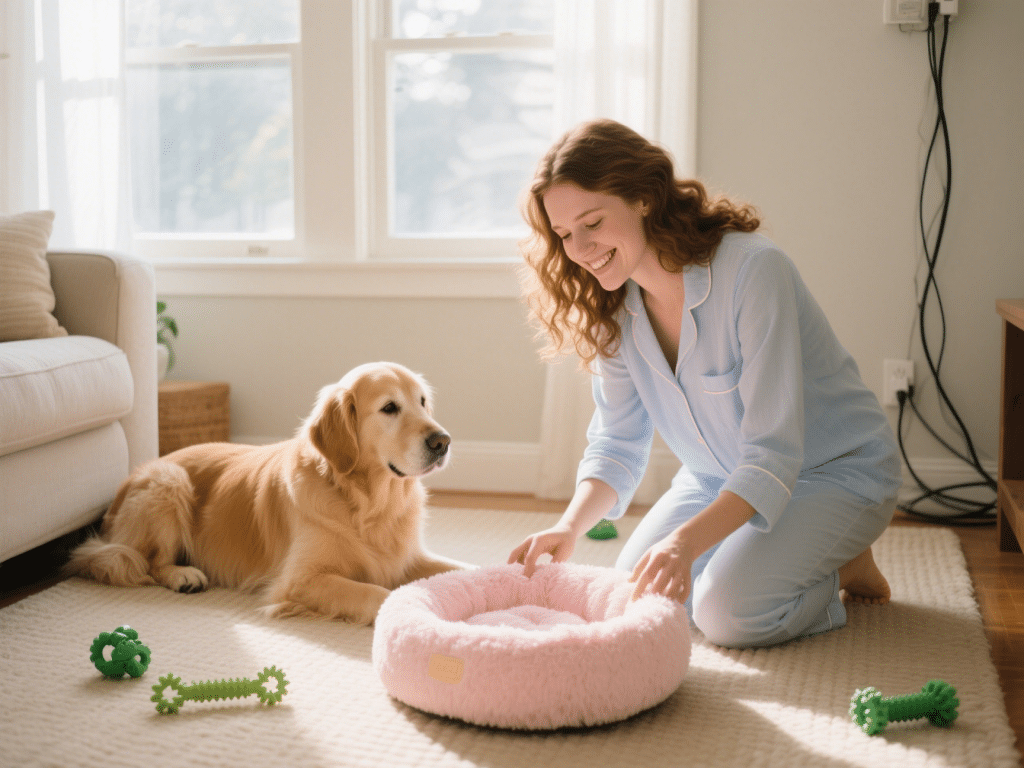How to Introduce a New Pet to Your Home: A Stress-Reduction Blueprint
Bringing a new pet home is exciting, but a poorly managed introduction can cause lasting stress for all animals involved. Follow this veterinarian-approved, behaviorist-supported phased approach for harmony.
Phase 1: Pre-Arrival Preparation (Days 1-3)
Designate a “Safe Room”: Equip a quiet room (bathroom/spare bedroom) with food/water bowls, bed, litter box (cats), toys, and hiding spots (cardboard box/covered crate). This provides critical decompression space.
Pet-Proof Thoroughly: Remove toxic plants (lilies, sago palm), secure loose wires, store chemicals, install baby gates. Use outlet covers and tie up blind cords.
Gather Supplies: Have separate food, bowls, leashes, and enrichment toys ready before arrival. Avoid sharing immediately to prevent resource guarding triggers.
Schedule a Vet Visit: Book within 48-72 hours for a health check, parasite screening, and vaccination review, especially crucial before exposing existing pets.
Phase 2: The Controlled Introduction (Days 3-7+)
Scent Swapping is Key: Rub the new pet with a clean cloth and place it near the resident pet’s food bowl (and vice versa). Swap bedding daily. Use synthetic pheromones (Feliway for cats, Adaptil for dogs) in common areas.
The “Door Barrier” Method: Allow pets to sniff each other under a closed door. Feed treats or meals near the door simultaneously to build positive associations. Listen for hissing/growling – increase distance if stressed.
Controlled Visual Access: Use a sturdy baby gate or screen door for brief, supervised face-to-face viewing. Keep initial sessions under 5 minutes, ending positively with treats before tension arises. Gradually increase duration over days.
Leashed Introductions (Dogs): Have two handlers. Walk pets parallelly at a distance where they notice but ignore each other. Gradually decrease distance over multiple sessions. Reward calm behavior profusely. Never force interaction.
Phase 3: Supervised Co-Mingling & Ongoing Management (Week 2+)
Short, Positive Sessions: Allow brief interactions in neutral territory (not resident pet’s favorite spot). Keep leashes on dogs initially for control. Have high-value treats ready (chicken, cheese).
Observe Body Language: Learn signs of stress (whale eye, tucked tail, stiff posture, hissing) vs. curiosity (soft eyes, relaxed ears, gentle sniffing). Immediately separate at the first sign of aggression or intense fear. End sessions on a calm note.
Manage Resources: Feed pets separately, initially in different rooms. Provide multiple water stations and high-value resting spots. Pick up toys when unsupervised until trust is established.
Maintain Routines: Stick to existing pets’ feeding, walking, and play schedules as much as possible to minimize jealousy and anxiety.
Phase 4: Long-Term Harmony & Troubleshooting
Patience is Non-Negotiable: Integration can take weeks or months (especially cats/cats or cats/dogs). Never rush the process. Signs of tolerance (ignoring each other) precede friendship.
Provide Vertical Space (Cats): Install cat trees, shelves, or window perches for escape routes and territory claiming.
Individual Attention: Dedicate one-on-one time with each pet daily to prevent jealousy and reinforce bonds.
Seek Professional Help: If aggression, extreme fear, or house soiling persists beyond 2-3 weeks, consult a certified veterinary behaviorist (DACVB) or qualified force-free trainer. Do not use punishment.
Essential Safety Notes:
Never Leave Unsupervised: Until interactions are consistently calm for several weeks, constant supervision is mandatory. Crate or separate when alone.
Microchip & ID Tags: Ensure all pets have updated microchips and collars with tags immediately. New pets are escape risks.
Species Considerations: Rabbits, birds, and small mammals require extreme caution and often permanent separation from dogs/cats. Consult species-specific resources.
By investing time in these structured, positive introductions, you dramatically increase the chances of a peaceful multi-pet household. Celebrate small victories and prioritize safety and patience for a truly smooth transition. Your commitment lays the foundation for years of companionship.










Comments on "How to Introduce a New Pet to Your Home: Tips for a Smooth Transition" :